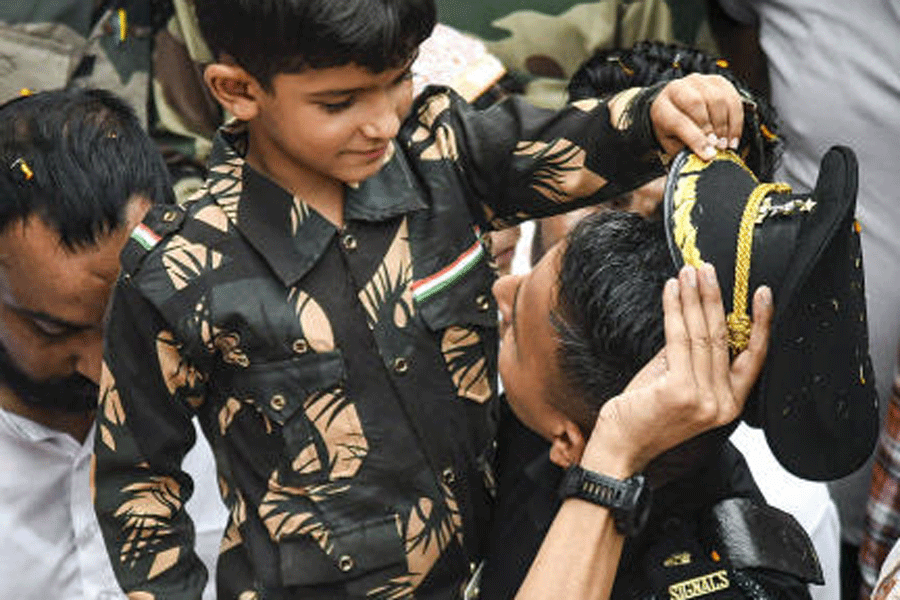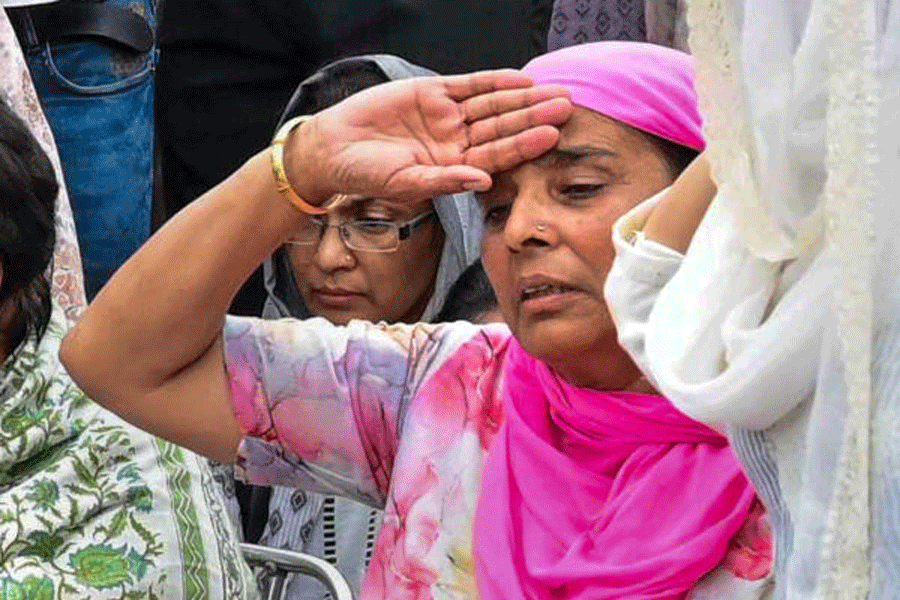The raging gunfight in Kashmir’s Anantnag suggests a definite shift in militant strategy to take their battle against the security establishment from the plains to the hills.
The battle, which continued for the third day in Kokernag’s Gadole area, has so far claimed the lives of Colonel Manpreet Singh, Major Aashish Dhonchak and deputy superintendent of police Humayun Bhat, while one soldier is reported missing.
Friday witnessed the most intense shelling by the security forces, guided by drones and choppers, on the hills — locally called Gorinala — believed to be sheltering the militants who on Wednesday inflicted the biggest casualties on military and police officers in years.
Police and armymen were seen ferrying rocket-propelled grenade launchers to the encounter site to pinpoint targets, apparently cave-like structures in which the militants are believed to be hiding. By evening there was no word on possible militant casualties.

The son of Colonel Manpreet Singh during his father’s funeral in Mohali on Friday. Col Singh was killed on Wednesday in an encounter with terrorists in Jammu and Kashmir. PTI picture
The police claim two militants, one of them identified as Uzair Khan, involved in the killings are trapped on the hill, which has been encircled to prevent their escape. Uzair is said to be a local.
“It is not a big hill, it will take you half an hour to climb it. But it is very steep at places, which is making the operation difficult. We are taking no chances to avoid further casualties,” a source said.
The source said a soldier was missing in action from the very first day while another jawan was injured.
The Resistance Front (TRF) — reportedly a front organisation of the Lashkar — which has claimed responsibility for the attack, said on Friday that the militants had managed to escape. The security forces, however, see the claim as a diversionary tactic.
While the finer details of the operation are unclear, what is becoming increasingly clear is a definite shift in militant strategy to lure security forces into the dense forests on the hills to inflict maximum casualties.
Sources said the militants had been using this technique with success in Jammu’s Pir Panchal region, comprising the border districts of Poonch and Rajouri, in the past year or two. The region has witnessed a revival of militancy after around two decades of relative claim.
The most glaring instance, the sources said, was in May this year when militants drew elite para-commandos to the Kesri hill area in Rajouri. They had laid an ambush and the commandos walked into the trap. Four para-commandos and another soldier were killed. The militants melted into the forests.
The trend marks a departure from what was being referred to as new-age militancy, fought in the plains, where militants announced their baptism to insurgency on social media by releasing their pictures brandishing guns and wearing army fatigues.
That trend was started by Hizb-ul-Mujahideen poster boy Burhan Wani in the mid-2000s. Wani was killed by security forces in 2016, plunging the Valley into months-long turmoil.
The militant strategy then gained recruits in large numbers but it eventually ran its course as hundreds of them, mostly poorly trained, were killed. They were killed in heavily populated areas where hundreds of houses, too, perished in the process.
Incidentally, Wani was killed at Bumdoora village in Kokernag, around 20km from Gadole.











